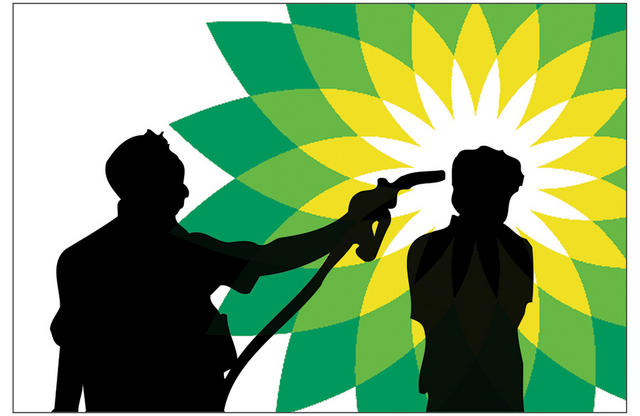
ASSOCIATED PRESS: Professor Peter Lutz is listed in BP’s 2009 response plan for a Gulf of Mexico oil spill as a national wildlife expert. He died in 2005. Under the heading “sensitive biological resources,” the plan lists marine mammals including walruses, sea otters, sea lions and seals. None lives anywhere near the Gulf. The names and phone numbers of several Texas A&M University marine life specialists are wrong. So are the numbers for marine mammal stranding network offices in Louisiana and Florida, which are no longer in service. BP PLC’s 582-page regional spill plan for the Gulf, and its 52-page, site-specific plan for the Deepwater Horizon rig are riddled with omissions and glaring errors, according to an Associated Press analysis that details how BP officials have pretty much been making it up as they go along. The lengthy plans approved by the federal government last year before BP drilled its ill-fated well vastly understate the dangers posed by an uncontrolled leak and vastly overstate the company’s preparedness to deal with one. Sen. Bill Nelson, a Florida Democrat, said in an e-mail Wednesday to the AP that he and Sen. Barbara Boxer, D-California, have asked for a criminal investigation of some of the company’s claims. MORE
RELATED: Some 40 miles out into the Gulf of Mexico, I jump off the boat into the thickest patch of red oil I’ve ever seen. I open my eyes and realize my mask is already smeared. I can’t see anything and we’re just five seconds into the dive. Dropping beneath the surface the only thing I see is oil. To the left, right, up and down , it sits on top of the water in giant pools, and hangs suspended fifteen feet beneath the surface in softball sized blobs. There is nothing alive under the slick, although I see a dead jellyfish and handful of small bait fish. I’m alone because the other divers with me wouldn’t get in the water without Hazmat suits on, and with my mask oiled over and the water already dark, I don’t dive deep. MORE
WASHINGTON POST: It was a bad day for most stocks today, but it was a bloodbath for embattled oil giant BP. Shares of BP dived 16 percent today, driving the stock price to below $30 per share, the worst drop on record for the company. The British energy giant closed at $29.20 per share. More ominously, investors and traders rushed to dump their BP shares: Trading of the stock occurred at four times normal volume today. As a result, the asset-rich company is now trading for less than its book value, which is essentially all the assets it has — oil fields, oil rigs and so forth — minus intangible assets and liabilities. In English, this means that investors and traders think that the company is now actually worth less than all the hard assets it owns. That’s a confidence trade. The company has now lost a staggering half of its value since the late-April explosion of the Deepwater Horizon rig and subsequent oil spill. You calculate a company’s value — called its market capitalization, or market cap — by multiplying its stock price by the number of outstanding shares. Today, BP is worth $91.4 billion. In mid-April, the company was worth $180 billion. Wow. MORE
